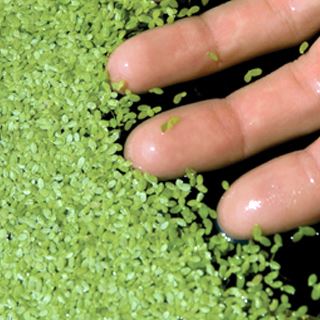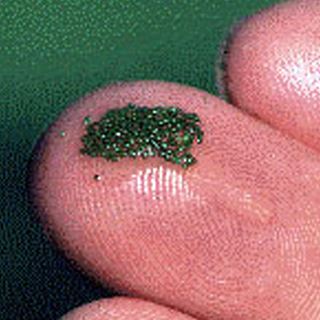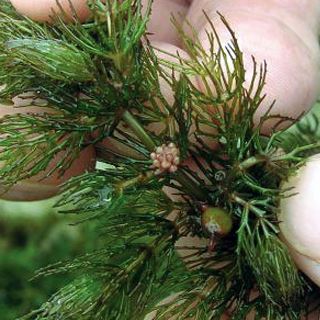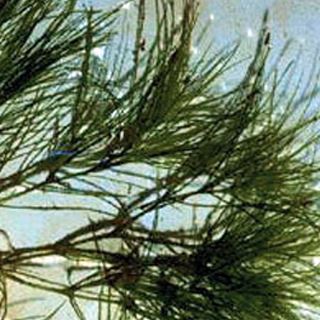Watermeal Treatment I Healthy Ponds Natural Solutions
We’ve put together a list of the most common weeds that cause issues for ponds. Our Chemical products (Algicide/Herbicide) can eliminate these weeds but we recommend 30 days after applying a chemical that you start using our all-natural treatment products to treat and remove the sludge layer and accumulated debris. Whether you need watermeal treatment, milfoil treatment, or eurasian watermilfoil treatment, we’ve got what you need.
Need an expert?
Click here to fill out a form and receive a Custom FREE Pond Treatment Plan in your inbox!
Floating Weeds

Duckweed
Duckweed is a very small floating plant. It has shoe-sole shaped leaves with a small hair-like root hanging on its underside. It resembles a four-leaf clover and is approximately the size of a pencil eraser. It is frequently misidentified as algae. Once established, it can cover the entire water surface and resemble a golf course green. It can cut off sunlight to submersed plants and cut off oxygen to fish and other wildlife.

Watermeal
Watermeal is recognized as the most difficult aquatic plant to control. It is the smallest of flowering plants; it can be dark to light green in color and resembles tiny grains of sand or cornmeal. It looks like very small dots covering the pond. Reproduction occurs by splitting, so complete coverage of a pond’s surface is rapid
Submersed Weeds

American Pondweed
American pondweed has oval-shaped leaves that spread across the water surface. The seed head extends above the water on slender stalks. American pondweed can form dense mats and block sunlight for submersed vegetation. American pondweed can be mistaken for Illinois pondweed.

Other Pondweeds
Curly-Leaf Pondweed, Clasping-Leaf Pondweed, Flat-Stemmed Pondweed, Floating-Leaf Pondweed, Horned Pondweed, Illinois Pondweed, Large-Leaf Pondweed, Sago Pondweed, Small Pondweed.

Muskgrass, Chara
Chara is often referred to muskgrass or skunkweed because of its foul odor. Chara is a gray-green branched multi-cellular algae that is often confused with submerged flowering plants. Chara has no flower, will not extend above the water surface, and often has a “grainy” or “crunchy” texture.

Eurasian Watermilfoil
Eurasian watermilfoil is an exotic species. Its leaves are feather-like and sometimes produce reddish flowers that extend above the water. The stems are red to brown in color. It can dominate a pond very quickly by fragmentation. Pieces of the plant grow roots to develop a new plant. There are many native milfoil plants which do not have as many feather-like leaves and are much less aggressive.

Coontail
Coontail is a submersed aquatic plant and can be easily identified by the “raccoon tail” cluster of leaves at the end of the main stalk. It has slender stems and leather-like leaves. Coontail is called hornwort when it is sold for aquarium decorations. It then spreads into ponds after aquariums are dumped into water bodies.

Naiads
The stems of naiad species are very long and have many branches. All naiads have very narrow, inch-long leaves that have definite teeth on their margins. Southern naiad leaves are less than 1/16 inch wide. With a hand lens, very tiny teeth can be seen along the leaf margins. Naiad leaves are arranged oppositely on the stem, or sometimes in whorls of three. The leaves are deep green to purplish-green. The flowers are very small and inconspicuous. The plants have “runners” that attach all plants together allowing them to spread rapidly.

Elodea
Elodea grows completely submerged. It has multi-branched stems that are slightly brittle. The leaves grow in whorls. It is introduced into ponds from the aquarium industry. The flowers of Elodea have three white petals with a waxy coating that makes them float. Elodea is commonly called anacharis or common elodea.
Emerged Weeds

Cattail
Cattails have dense, “sausage-like,” spikey flowers, called the catkins that appear on top of the long, slender stems in late summer to early fall. Cattails can be partially submerged or in boggy areas with no permanently standing water and can grow to 5 or 10 feet in height. They provide a wildlife habitat and refuge. Overgrowth can choke off open water, driving away birds.

White Water Lily
The white water lily is a perennial plant that often forms dense colonies. Water lily is one of the most recognizable floating aquatic plants. Sold as decorative plants for ponds and water gardens, this species can spread rapidly if left unmanaged. It is a rooted, emerged plant with large, notched, plate-like leaves with flowers that are white. The flowers may float or stick above the water and each opens in the morning and closes in the afternoon. The flowers are very fragrant.

